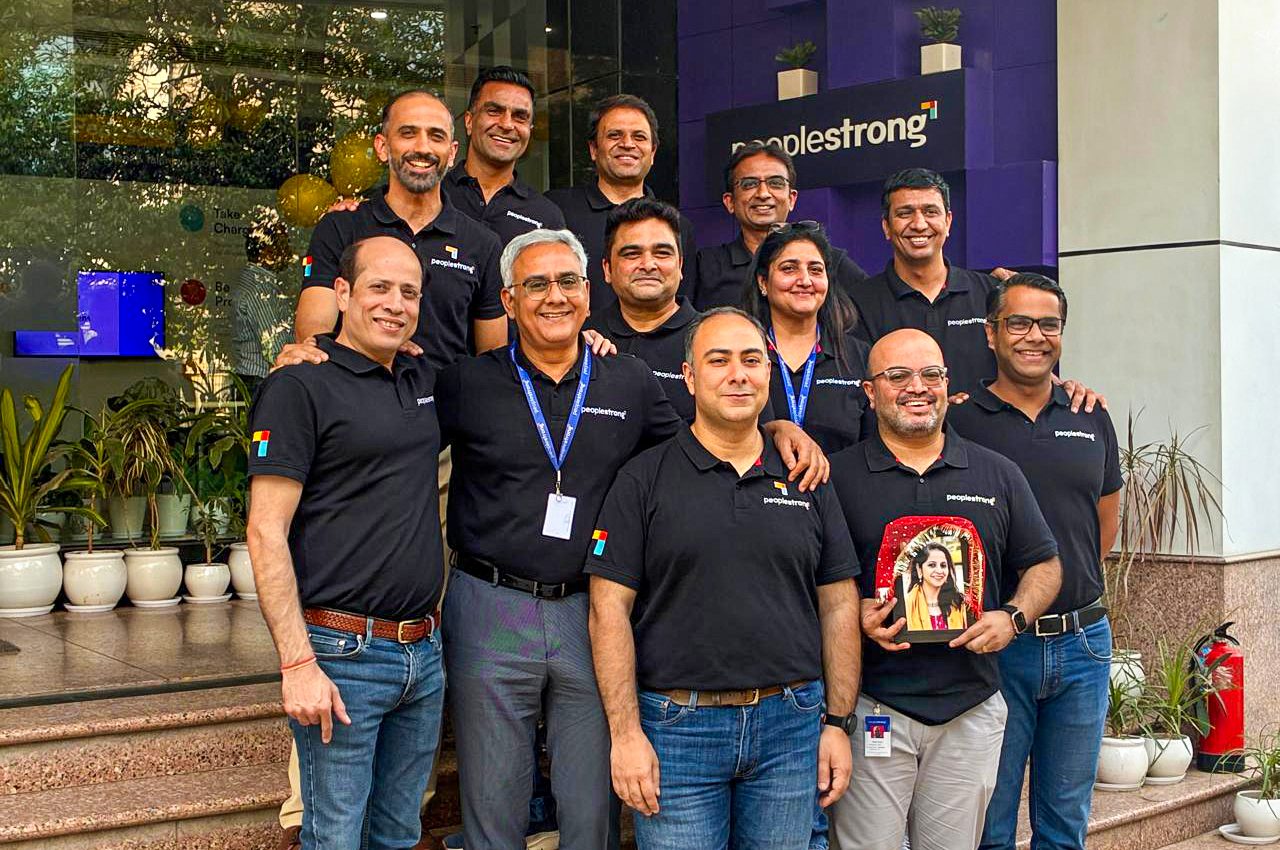Hiring costs are steep. For any organization, they are a key factor in conducting a talent search. The cost of hiring new employees has gone up noticeably in recent years. In 2019, the average cost per hire was $4,129, but that number jumped to $4,700 in 2023.
That’s a 13.8% increase!
The tight job market and the increasing cost of recruiting qualified candidates are some reasons for this rise. But how do organizations tackle this challenge of climbing hiring costs?
By adopting cost-effective methods and making changes in their hiring processes.
We’ve compiled 11 cost-effective recruitment strategies for you in this article.
Let’s go!
Suggested Read:
A Step-by-Step Guide to Crafting Your Recruitment Strategy Plan
1. Understand What and How to Advertise Yourself
Job advertisements are a company’s first chance to make a positive impression on potential hires. They offer a window into your company culture, the value placed on employee rights and benefits, and, ultimately, how well a candidate might fit in.
Marketing in the appropriate channels is one of the finest strategies to encourage cost-effective employment. Spreading your net too wide can be expensive. By using data analysis, you can identify the recruiting channels that have yielded the best results in terms of attracting qualified applicants. This allows you to focus your marketing efforts and maximize your return on investment.
2. Examine Recruiting Metrics Again
Review and evaluate hiring metrics regularly to pinpoint problem areas and maximize resource use. Metrics like time-to-hire, candidate quality, and source effectiveness may help understand recruiting operations’ efficiency and efficacy.
While time to hire, cost per hire, and retention rate are the most often monitored recruitment metrics, there are a number of other measures that can provide insightful information as well, like:
- Quality of hire
- Applicant-to-hire
- Turnover rate
- Retention rate
- Application completion rate

Analyze your data with a powerful recruitment dashboard to find hiring process bottlenecks. For instance, PeopleStrong’s analytics capabilities can help pinpoint areas where your recruitment process is slowing down or dropping off candidates.
3. Establish a Robust Employer Brand
Invest in developing a powerful employer brand to draw top talent and set your business apart from rivals. To attract potential applicants, highlight employee endorsements, the corporate culture, and professional growth prospects.
Job seekers often prioritize established, reputable companies when starting their employment search. The positive perception you’ve cultivated through your products and services spills over into your employer brand.
4. Enhance the Internal Mobility Process
Establish a culture where job switching (internal hiring) is welcomed. Map out your skill sets and do an internal audit first. This will assist you in identifying any skills shortages that individuals on your team can fill. In addition, you’ll be able to identify the abilities you actually lack in-house and use that information to decide which positions you should hire for.
Create a systematic internal hiring procedure by promoting career development and mentorships inside your company to overcome this issue. This will benefit staff retention as well as internal mobility.
5. Using Digital Recruiting Software
One of the best ways to shorten hiring cycles, simplify work, and cut costs is through recruiting automation. By streamlining the recruitment process and attracting a more qualified talent pool, PeopleStrong can help you reduce the overall cost per hire. This includes minimizing expenses associated with advertising on multiple job boards, agency fees, and wasted time interviewing unqualified candidates.

In short, digital recruiting software helps reduce hiring costs by automating tasks, improving candidate targeting, providing data-driven insights, and enhancing the candidate experience. This ultimately leads to a more efficient and cost-effective recruitment process.
6. Conduct More Remote Interviews
The practice of conducting interviews remotely is becoming increasingly common, particularly in light of the COVID-19 epidemic, which has rendered in-person interviews all but impossible for most businesses. Remote interviewing speeds up the recruiting process, lowers the possibility of unintentional hiring biases, makes scheduling easier, and eventually lowers hiring expenses.
7. Build Feedback Loops
Implement feedback systems to obtain applicants’ perspectives and enhance the hiring process in response to their suggestions. Feedback on the application procedure, the interview experience, and general applicant satisfaction may be obtained through surveys, interviews, and focus groups.
Don’t overlook past applicants; reach out to build a talent pool. Skills evolve, and someone not quite perfect before might be ideal now. Recruiting managers can flag promising candidates for future openings, streamlining your hiring process.
8. Maintain Uniformity Throughout the Recruiting Process
To encourage fairness and openness, ensure that communication and assessment criteria are consistent at every level of the hiring process. Standardized assessment metrics, scoring rubrics, and interview questions assure fairness and remove prejudice for all applicants. Consistency streamlines the process, reducing time spent on ad-hoc decisions and rework. Recruiters can focus on attracting top talent instead of navigating inconsistencies.
9. Write a Detailed Job Description
To attract skilled individuals, it is essential to provide detailed job descriptions that clearly define job tasks, qualifications, and expectations. Incorporate details on the firm’s beliefs, culture, and perks to offer prospects a comprehensive picture of the position and company.
A clear and comprehensive description outlines the role’s responsibilities, skills, and experience requirements. This attracts qualified candidates who are a good fit for the position, reducing the time and resources wasted on interviewing unsuitable applicants.
10. Using Online and Social Media Platforms
Online and social media platforms boast massive user bases, allowing you to reach and connect with a diverse pool of qualified candidates you might not reach through traditional methods.
Posting about available positions on digital platforms such as social media, your company website and blog, and subscriber job notifications may help increase awareness, save hiring expenses, and enhance your sourcing strategy.
11. Use the Power of AI
Using cutting-edge recruiting technology, such as AI-powered tools and application tracking systems, to find top people quickly and streamline procedures. AI systems may reduce human bias and save time by screening resumes, evaluating applicant suitability, and forecasting job performance.
For instance, using PeopleStrong’s Gen AI, you can create compelling and informative job descriptions that resonate with qualified candidates. This can lead to a higher volume of relevant applications and a better applicant pool.
Suggested Read:
10 Proven Recruitment Strategies to Attract Top Talent
Conclusion
Firms must embrace cost-effective recruitment strategies in 2024 as they negotiate the changing recruiting environment. These tactics are essential for hiring process optimization, luring top personnel, and expediting hiring procedures in addition to budget management.
Using an AI-powered recruitment platform like PeopleStrong can help you save hiring costs in multiple ways. Schedule a demo now to see how PeopleStrong can reduce hiring costs and find the perfect fit.
FAQs
How can a firm evaluate the expense-to-benefit ratio of recruitment strategies?
By examining costs per hire, time to fill, and hiring quality and contrasting them with organizational goals and performance indicators, businesses may assess the cost-benefit ratio of recruitment techniques. By monitoring these variables over time, companies can evaluate the efficacy and efficiency of their hiring operations.
How do cost-effective recruitment strategies benefit businesses?
A company that uses cost-effective recruiting tactics benefits from lower hiring expenses, increased productivity, attracted top talent, and improved employer brand reputation—all of which contribute to improved organizational performance and results. By simplifying procedures and maximizing the use of resources, businesses may get better results for less money.
How can such strategies be combined with ever-growing technology?
Advanced tools like AI streamline candidate sourcing by identifying ideal matches from vast applicant pools. Automation frees up your team to focus on high-value tasks like interviewing and evaluation. Data analysis provides valuable insights to optimize your process, and a smooth, technology-driven experience keeps candidates engaged throughout.












